Publishing 101 | Publishing 102 | Publishing 103 | Publishing 104
This is David Logan, CEO of Akupara Games, and I’m back with the final part of my game publishing trilogy! For those of you who have stumbled across this series for the first time, let me direct you to the original article that aims to guide you to making the decision to self-publish or partner with another studio to publish your game. After that, you can learn how to find the best game publisher for you in the follow up article. Take your time; I’ll be here for you when you’re ready!
All caught up? Great! By now, you’ve decided that a publisher route is exactly the way you want to go, found some great potential publisher fits, and know what you might want to talk to them about once you’ve got your foot in the door. Now what? Well, it’s time for you to craft your pitch and materials, get noticed, and actually get your foot in the door!
The Basics
These are the primary materials that you will want to prepare as you begin reaching out to publishers. It may seem like a lot, but you really want to be prepared and confident in your own idea and to leave the best impression possible. With the following materials you are telling the publishers that you are a serious studio, and have already poured a ton of time, sweat, and thought into your game.
Trailer
- A good trailer will pique the interest of publishers before anything else
- Be clear about what the game is all about – concept, plot, genre, gameplay, etc
- The most effective way for your pitch to be dismissed is if there are too many unanswered questions about basic things after watching your trailer
- Your game’s content should be clear to the viewer
- A trailer is a really powerful asset because it provides a good peek at how all the aspects of the world you’re creating come together – audio, art, design, etc.
- This will be one of the few opportunities for them to see your game come to life during your pitch, as most other material will be text and still images
- Be careful that you aren’t hiding something vital through the trailer; in which case, a publisher may just prefer concept art and a prototype
- Make sure that your trailer does your creation justice and accurately represents what you want to showcase at that moment
- Let your trailer shine and show what makes it unique
- What will make people talk about your game?
- How are they going to talk about it after watching it?
- Check out “How To Make an Indie Game Trailer | Game Maker’s Toolkit” on YouTube
Team Cherry’s Hollow Knight has a more simplified trailer whose primary focus is gameplay. By showcasing the game’s mechanics and aesthetics, it allows the viewer insight to a game that has multiple areas, enemies, bosses, skills, and much more. A trap that this trailer did not fall into was overlaying music over each scene; rather, it kept the scenes intact with sound effects as music accompanied these scenes. Without those sound effects, your game doesn’t feel as alive or realized – it just feels flat. It’s important to note that this trailer also features on screen text to fill in the gaps of viewer’s knowledge. A two minute trailer is never going to be enough to show everyone the fine details, so don’t be afraid to drop in with some text to make sure everyone’s on the same page.
Demo/Build
- Having something working and playable will help tremendously in your pitch
- Ensure your demo plays well, has been playtested, and free of major bugs/glitches that prevent the demo from being fully experienced
- If your game involves puzzles or sections where the player has to input information, make sure that people outside of your circle of development are able to also progress with ease
- Including a document with your demo that outlines how to play the game and controls will be greatly appreciated
- Ensure your demo plays well, has been playtested, and free of major bugs/glitches that prevent the demo from being fully experienced
- Demos show how ideas have turned into something realized
- It should provide a player both excitement for and expectations of what’s to come
- Of course, it’s not out of the realm for a demo to not be completely representative of the final product in visual assets or complex mechanics
- It should provide a player both excitement for and expectations of what’s to come
- Use your demo as an opportunity to focus on the uniqueness and difficulties of the game, i.e. proof of concept
- Prioritize fun gameplay over graphics
- Use your demo as a chance to show off excellent writing skills if dialogue is a big part of your game
- It’s understood that the build of your game will not have finalized assets, so don’t be afraid of having placeholders
- Be sure it’s easy to tell if something is a placeholder
- It can mislead or misrepresent your design if a placeholder looks like it belongs, but does not look great
- Be sure it’s easy to tell if something is a placeholder
- Know whether you want to work towards a Vertical Slice of your game versus an Alpha or Beta
- A Vertical Slice gives the best impression of what the final product will be in a short bite-sized piece
- It is like a single slice of a dressed up cake with all the layers, frosting, decorations, and candles
- Mechanic-based or multiplayer games may be better presented as vertical slices, so publishers can see the final quality of the product
- An Alpha isn’t as polished of an experience, but shows the entire game from start to finish
- This is the entire cake, baked and frosted, but it doesn’t have all the sprinkles and decorations on it
- Story-based games or games with a strong single player may be better presented as alphas, so the publisher can see the full intended experience
- A Beta is a more polished Alpha build, that has everything the final game would, except may need final tweaks in design and bug-fixing
- This is the best of both worlds – high fidelity and polish, and nearly final content
- Betas take the most time though, so although they present best, they also would have cost the most to get here
- A Vertical Slice gives the best impression of what the final product will be in a short bite-sized piece
- Above all, make sure your demo is fun to play
- Leave the people playing your demo grasping for more by the end of it
- Focus on the fun and stray away from anything that might be frustrating and keeping people from finishing your demo
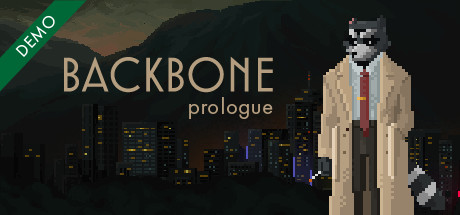
Indie developer EggNut made excellent use of the Steam store by providing a free demo of their film-noir inspired adventure game. The demo provides a great example of what a Vertical Slice looks like. By offering a free demo, users were able to experience what feels like full and realized game and the opportunity to provide their feedback to further improve it. By being on Steam it helps generate Steam Wishlists, which are vital to getting sales on the game’s launch. It also has an excellent button on the ending to really get you hooked. Check it out on Steam!
Pitch Deck
- The pitch deck allows you to show potential publishers what your game can become
- While the trailer and build shows where the game is, utilize the pitch deck to show how you foresee the full experience working, such as highlighting a variety of enemies, bosses, or late game mechanics
- After you gather your assets and put them all together, there are two main questions that need to be answered with your pitch deck:
- Is this game worth making?
- Think about what makes it different/fun/unique/something people will want to buy
- Can this team make the game?
- Point out any obvious technical risks or challenges that you honestly foresee upfront and prove that you have the people/resources/knowledge to address them
- As an encouragement and reassurance that your team can make the game, include your track record of success and mention previously released games
- Is this game worth making?
- Be sure to include the core loop, mechanics, and the player experience
- If pitching to publishers, prioritize your game mechanics over your game’s monetization model, no matter how good you foresee the monetization
- When it comes to art, it’s quality over quantity
- Focus on one or two top-quality pieces of that really represent your game, rather than a lot of mediocre art
- Take some time to sell yourselves as a company and as individuals
- Keep this to 1 or 2 slides though, as your actual pitch is the most important part
- With a limited amount of real estate to sell your team and members, show proof of why you are the best team to make the game so it focuses less on general skills and leans on why your team is the best fit in comparison to anyone else
- Though your game may not be the right fit for the publisher(s) you approach, they may remember you and contact you for other projects/purposes
- Keep this to 1 or 2 slides though, as your actual pitch is the most important part
- Overall, don’t forget about the power of the classic elevator pitch
- Know how to quickly and succinctly describe your game for others to understand and digest it
- It’s completely okay to say it’s a cross between two well-known games or a mix of genres; people will understand this easily
- Know how to quickly and succinctly describe your game for others to understand and digest it
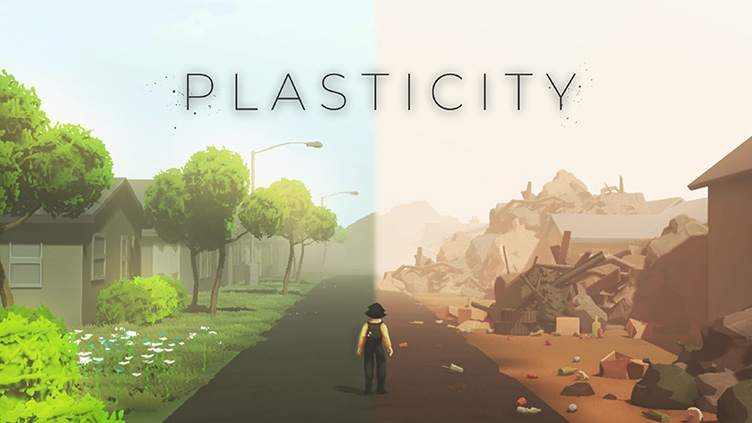
Plasticity is a short experience that was brought to us by students of the USC Games Program. Check it out for free on Steam, currently with about 20-40 minutes of content and multiple endings! Taking a look at the pitch deck they submitted, let’s point out some really good points when it comes to preparing a deck for your game.
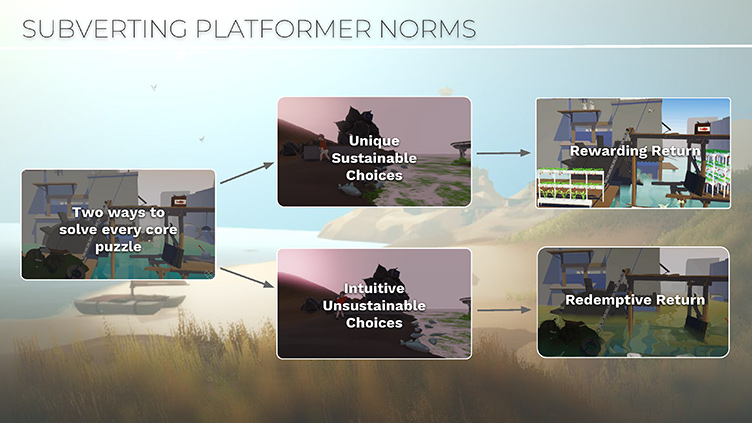
Calling attention to this slide for its use of in-game assets, as it keeps the viewer grounded in the idea of the game they’re looking at. Additionally, it’s great material to help separate the game from other titles in the genre. It is telling how the game is being innovative.
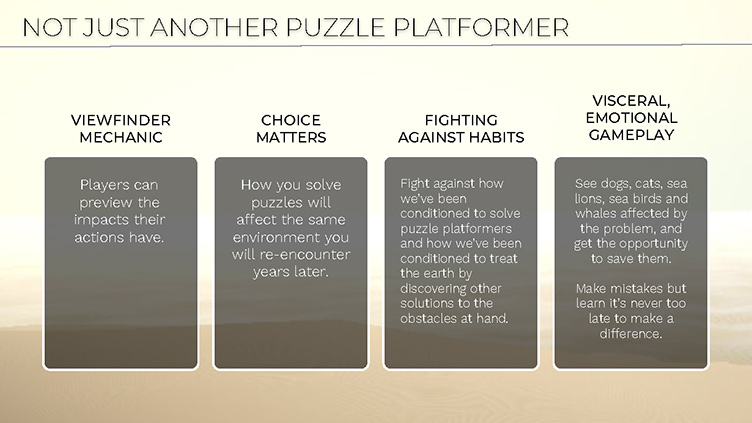
Continuing the world building within the pitch, this is telling how the game is original and unique.
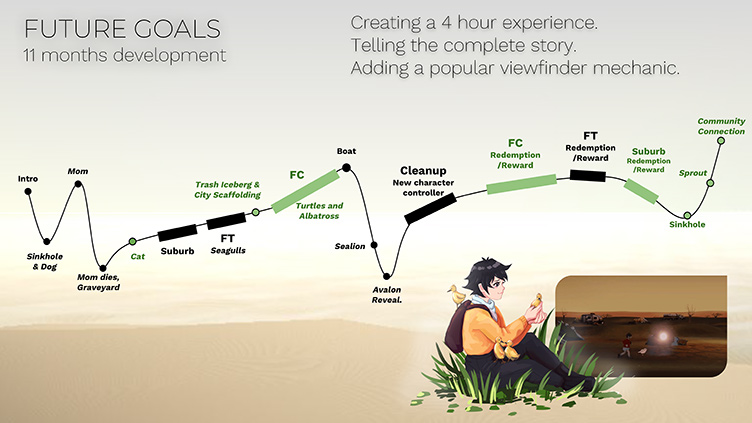
As mentioned above, the pitch deck is the developer’s opportunity to show where the game can go past what is present in the trailer and build. By being transparent, you are building rapport with your potential publisher and they will be able to make a more informed decision on how to approach your game.
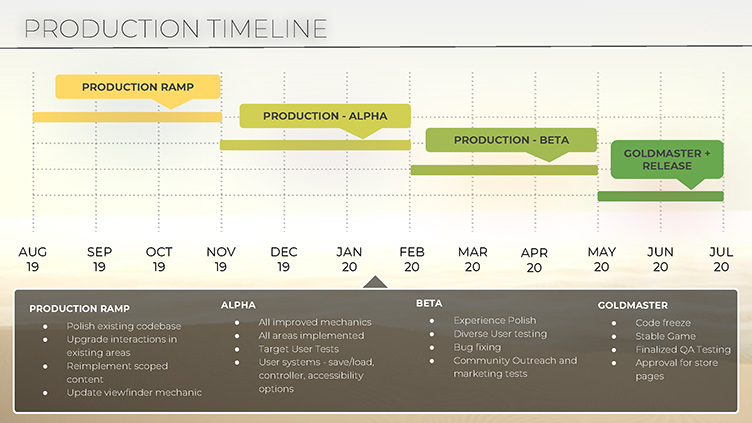
Show how serious you are in your intentions with an educated and informed production timeline. Depending on how/when you expect to be getting paid during development, this will be very helpful to a publisher in proposing a budget. Having a project budget is mandatory for a publisher to know the scope of what’s needed in terms of funding. Include each team members’ monthly cost, facility costs (if any), hardware, software, and stuff such as marketing expenses.
What You Need from Them
- When in the talks with a publisher, be transparent on your expectations and needs from them, such as:
- How much financing you need
- Whether you need porting assistance
- What forms of marketing support you need
- Anything else from my Publishing 101 article
- Before you submit your pitch, have estimates of:
- Budget to make your game
- Be transparent and explain why and how funding will be used
- Your timeline
- Be prepared to show the task breakdown per month for each person
- What additional talent you need to complete your game
- Budget to make your game
- As a publisher knows what they are able and willing to provide, it is important for your time and theirs that you are open and honest about your needs early on

Advice for a Great Pitch
General
- Avoid bandwagoning to a current craze/gimmick – unless your game really calls for it or the publisher is looking for it
- Don’t pitch a game for an IP without already having the licensing deal, hoping the publisher could help you secure that deal for you
- The exception here is if the publisher owns the rights to the IP, and you’re making a pitch at hopes of getting approval from them
- Make sure your business plan is realistic
- Don’t be afraid to dream big, but also be prepared to admit to the challenges you will face and how you plan to address them
- Tailor your pitches to the publisher you are approaching
- Be mindful of your time and theirs and show them something they want to look at
- Don’t show a mobile-only publisher your console-only game, or don’t show your horror game to a publisher that typically is known for lighter and friendlier genres
- Be mindful of your time and theirs and show them something they want to look at
- Think about your pitch from a mutually beneficial perspective
- Be upfront about what you need from the publisher, but also outline what it is that you are providing for them as well
- Be passionate about your game, your company, and your brand
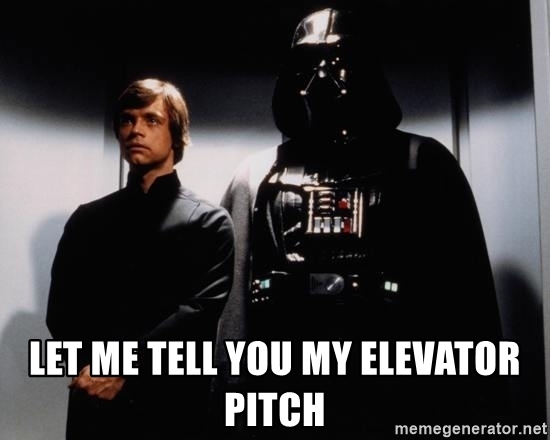
In-Person
- Be professional
- Dress well
- Be prepared for many different situations when it comes to pitching your game
- Prepare physical materials in the event there are some tech issues
- Think about potential questions and how to answer them
- Have a fact/breakdown sheets that can be passed around for latecomers
- Come with your own devices, in case of incompatibility, or prepare for all types
- Choose the right team and people
- Not everyone can hype up the room and push your game in the right direction, so figure out who on your team is the best for this
- Be enthusiastic, honest, sell your hook, know your audience, and know your direction
- Don’t waste time by starting only once all your technical setup is ready
- Have team members prepare the tech, while others are socializing and getting a read of the room
- Break out any literature you may have prepared, in the event setup is taking longer than expected
- Not everyone can hype up the room and push your game in the right direction, so figure out who on your team is the best for this
- Leave time for questions and clarification
- Don’t get annoyed or worried when asked questions
- Questions are a means of getting clarity based on your pitch, and different people are going to have different questions
- Don’t get annoyed or worried when asked questions
- Be sure to exchange business cards if you haven’t previously done so

- Keep your pitch short, clear, and interesting
- Toss in a cool visual GIF that is low in size
- High quality image that represents your game works well, too
- Include an easily accessible link to a compelling YouTube trailer
- Preferably using bullet points, cleanly lay out the details of your game
- Brief and graspable description of your game’s plot and gameplay
- Target platforms and audience
- The needs of your project
- Include a link to where someone can access a playable build of your game
- Make sure your format is actually email friendly
- It’s easy for your formatting to get a little awry when you copy/paste from somewhere else or after dropping in any images/GIFs
- Extra points for you if you can even make it mobile friendly for those who may be reading your email pitch on their phones
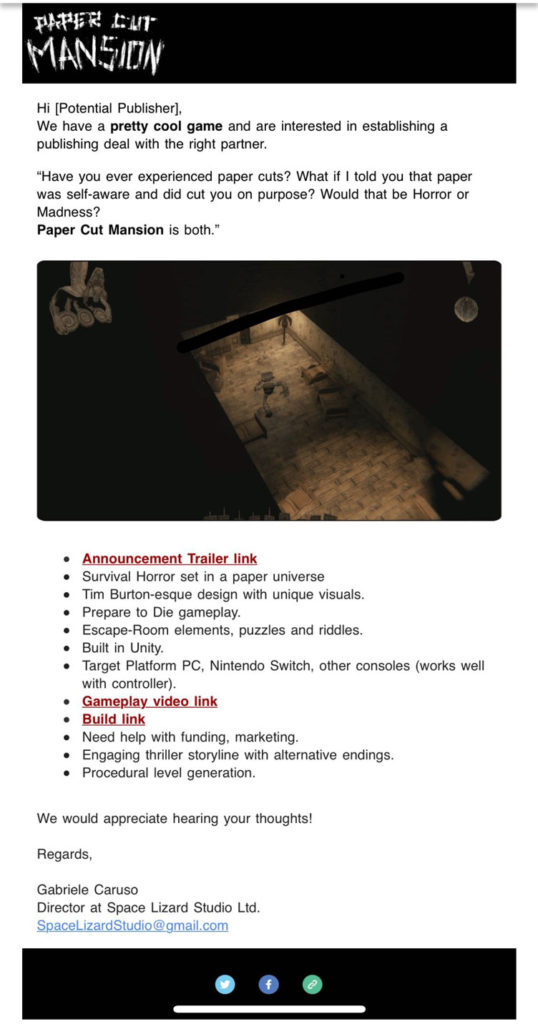
Paper Cut Mansion of indie developer Space Lizard Studio put together their pitch in a great looking email (even on mobile!) with good readability and succinct bullets. Everything is quick and to the point. Hyperlinks helped to highlight and draw the eye to the important things they want their reader to see; plus, it makes attaching assets like videos and builds really clean. With just a glance, a publisher already knows key points about the game – core concept, platforms, and needs. Check out ongoing development of the game on Facebook!
The Right Fit
The first step and a crucial key to a successful pitch, and hopefully a signing, is ensuring that you are pitching to the right audience. This means really understanding your brand and what it is exactly you’re trying to sell. This also entails you doing research and shopping around for publishers who are likely to be interested in you and your game. If you’re lucky, you can be like Diaries of a Spaceport Janitor and be approached without even pitching. The secret to this is having main publisher targets and stay in the shadows – appear at events that they will be at, appeal to their target signings, and be ready to showcase your game to them when they are ready and looking. In most cases, however, you might not be as lucky. This just means perfecting your materials to the best of your capabilities and trusting in your team and game.
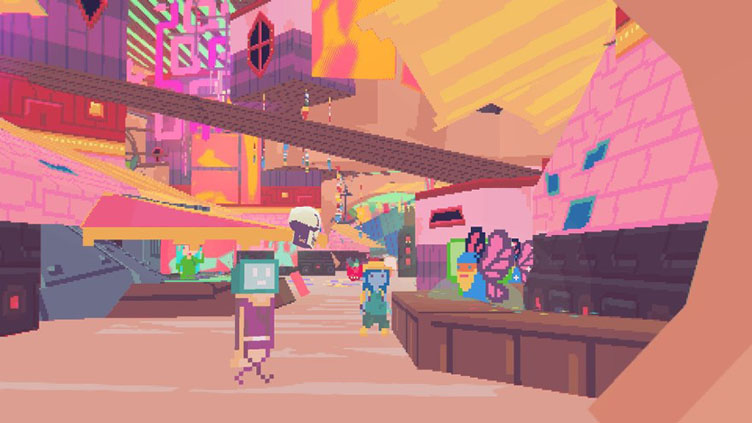
An “anti-adventure” game, Diaries of a Spaceport Janitor had the experience of actually never being pitched to anyone, according to developer Sundae Month. Instead, indie publisher tinyBuild approached Sundae Month to partner up after seeing an article on Killscreen (linked above). “We had a call with them where we talked about what the game was, and if I recall correctly, we showed them a build. It was something close to a horizontal slice though, with most of the environment at a moderately finished state. With Diaries that’s kind of the key selling point.”
What Akupara Looks For
As Akupara Games is a game publisher, we are always on the lookout for games to partner with. We believe in and support the indie developer – being uninhibited by many external factors, they are free to create truly unique and meaningful works. As a team, we choose to work on projects that we are passionate about, due to a combination of the project itself and the development studio’s drive. We actively look out for and approach projects that we see or hear about across different events and avenues. Cold pitches are welcome, as we are always interested to hear about those hidden gems. Listed below are some things we consider while we are evaluating bids for projects to work on.
- Premium titles
- PC and console focused
- No AR and VR
- Game design that has not been explored before
- New playing mechanics
- New genre or unique hybrid
- Teams that are easy to work with
- Communication
- Work ethic
- Reliability
- Fun to be around and interact with
- Passionate teams
- Willing to match our team in effort in preparing for release

If interested in pitching to Akupara Games, you can email us at team [at] akuparagames [dot] com with a pitch deck, build, and trailer!
Conclusion
By now, you should have a good idea of what materials you will want to prepare before you start reaching out to those potential publishers. Perhaps you’ve already prepared these materials, and if so, hopefully there were some insightful points that you can use to improve your materials to make them even better.
Thank you for reading our short game publishing series. We really hope it proved to be useful in your growth in the indie gaming spacing. We love to share our experiences and knowledge!
If you have any questions after reading this, feeling something is missing, or have another topic you want us to cover, let us know on social media @AkuparaGames on Twitter, Instagram, Facebook, and Discord.

[…] Publishing 101 | Publishing 102 | Publishing 103 […]
[…] Publishing 101 | Publishing 102 | Publishing 103 […]
[…] Publishing 101-103 – Akupara Games CEO David Logan […]